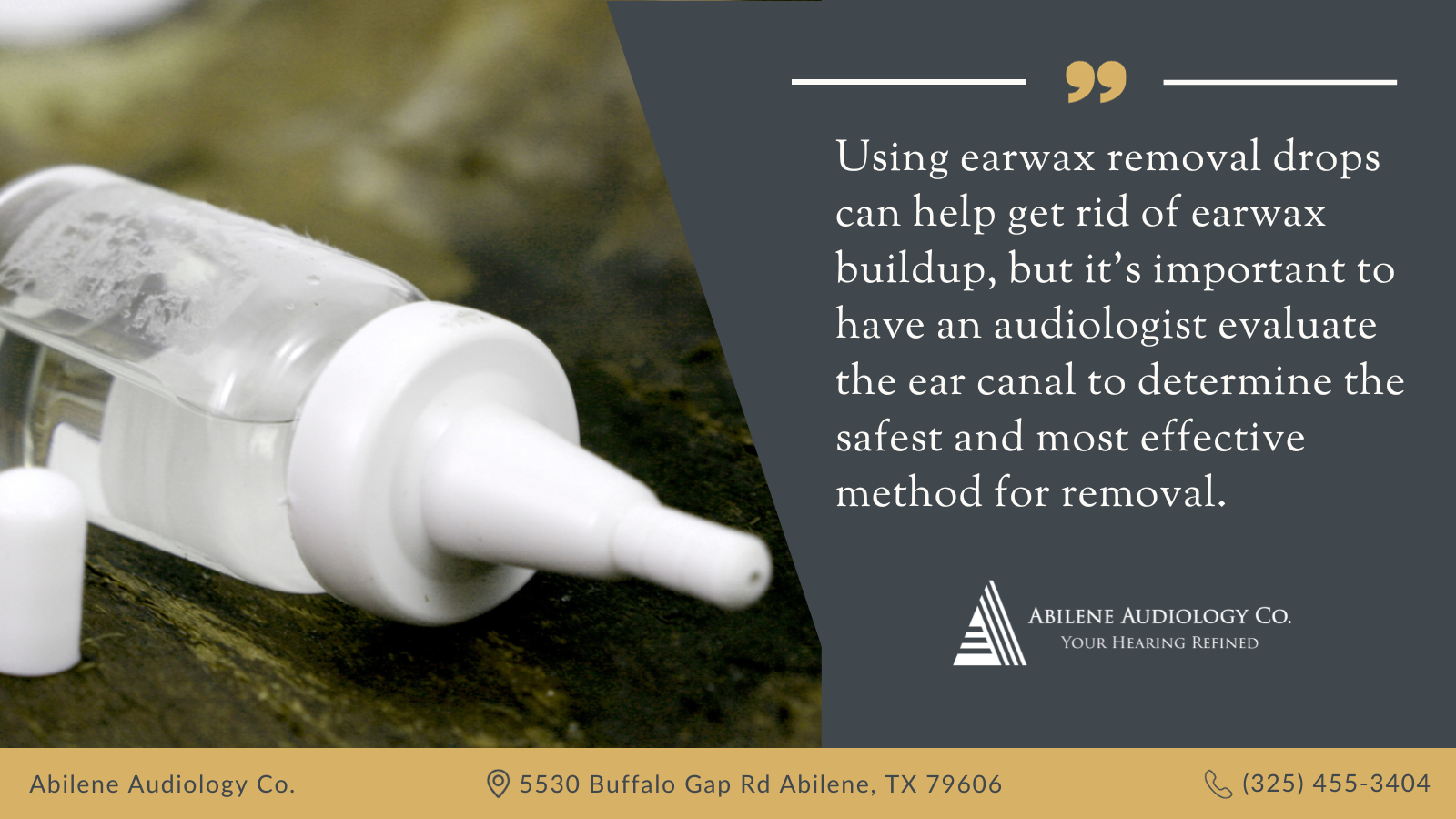Earwax removal drops are a common method to manage excessive earwax buildup. Earwax is a natural substance produced by the glands in the ear canal to provide protection and lubrication,
If too much earwax is produced, it could lead to accumulation, which can cause a blockage in the ear canal and trigger earache, tinnitus, hearing loss, and dizziness.
If you are experiencing symptoms related to earwax buildup, it is important to see an audiologist who can perform a thorough evaluation of the ear canal and determine the most ideal course of action to remove the wax safely and effectively. In cases of mild earwax issues, audiologists may recommend earwax removal drops as a primary intervention.
How do earwax removal drops work?
Earwax removal drops are composed of hydrogen peroxide or carbamide peroxide, which help to loosen the earwax. To use earwax removal drops, it is a must to follow the instructions carefully, as incorrect usage can lead to injury or infection.
Typically, a few drops are applied in the affected ear and required to sit for several minutes before flushing the ear with an ear bulb syringe or warm water to facilitate softening of the wax.
Earwax removal drops are a safe and effective way to manage excessive earwax buildup. Earwax removal drops should not be used if you have a perforation in your eardrum, pressure equalization tube, or active ear infection. It is recommended to seek the advice of an audiologist before applying any earwax removal products.
What is Ear Wax Removal?
Ear wax removal is the process of safely and effectively removing impacted ear wax from the ear canal. Ear wax is a natural substance produced by the glands in the ear canal to lubricate and protect the ear. However, accumulation of too much earwax could lead to unpleasant conditions such as hearing loss, tinnitus, earache, and dizziness.
It is important to consult with an audiologist before attempting to remove ear wax, especially if you have a perforated eardrum or a history of ear problems. Ear wax removal done incorrectly can cause further damage to the ear canal and may lead to infection or hearing loss.
The Role of Earwax
Earwax, also referred to as cerumen, plays an integral role in protecting and maintaining the health of the ear. Produced by glands in the ear canal, earwax is composed of oil, secretions, hair, and dead skin cells. While often regarded as an annoyance, earwax actually serves various functions in terms of ear health.
One of the primary roles of earwax is to protect the ear from foreign objects, such as dirt, dust,, and bacteria. The sticky nature of earwax is ideal for trapping these particles, preventing them from penetrating the inner ear where they can cause infection or damage.
Earwax also serves as a lubricant to moisturize the skin of the ear canal, preventing itching and dryness. Cerumen also has antifungal and antibacterial properties, which help prevent infections.
Did you see how earwax promotes ear health? The only time when earwax becomes a problem is when an overproduction of cerumen occurs. When the ears produce excessive amounts of wax, it could lead to impaction and earwax buildup, which could exacerbate hearing problems, pain, ringing in the ears, or discomfort.
What happens if you have excessive earwax?
Excessive earwax can lead to various problems such as:
- A feeling of fullness or blockage in the ear
- Hearing loss
- Ear pain
- Tinnitus (ringing in the ear)
- Dizziness
- Unpleasant odor coming from the ear
- Discharge or drainage from the ear
Please seek the advice of an audiologist if you are experiencing problems or symptoms related to earwax buildup. Audiologists can perform a thorough evaluation of the ear canal and determine the best course of action to remove the wax safely and effectively.
How do audiologists handle earwax?
Audiologists can check the status of your ears and determine the best course of action for issues caused by excessive earwax. They can also determine potential causes of ear-related problems, such as ear infections or hearing loss, and provide appropriate treatment or referrals to other specialists if necessary.
Regular check-ups with an audiologist can help maintain ear health and prevent future problems and complications.
What should I avoid while using earwax removal drops?
When using ear wax removal products, it is important to follow the instructions carefully to avoid encountering problems or complications.
Below are some things to avoid while using earwax removal drops:
- Using ear wax removal products for longer than recommended
- Using ear wax removal products if you have a perforated eardrum, pressure equalization tube, or history of ear problems
- Inserting cotton swabs or small, sharp objects into your ear canal
- Cleaning your ears too aggressively or too frequently
Earwax Problems: When to see a doctor?
While earwax is a natural substance that helps protect and lubricate the ear, excessive earwax buildup can cause problems.
Some signs that you may need to see an audiologist for possible earwax issues include:
- Hearing loss
- Pain or discomfort
- Ringing in the ears
- Dizziness
Professional Earwax Removal in Abilene, TX
If you are unsure about how to safely remove earwax or are experiencing symptoms related to earwax buildup, it is best to seek the expertise of an audiologist.
Abilene Audiology Co. offers professional earwax removal in Abilene, TX. Our audiologists can perform a thorough evaluation of your ear canal and provide appropriate treatment or referrals if necessary.
Contact us today to schedule an appointment!

